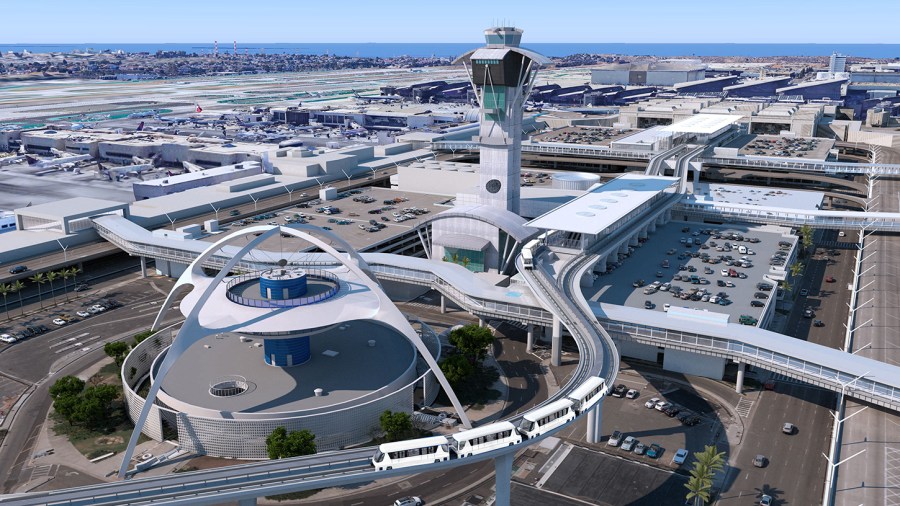LAX’s long-delayed and much-maligned transit project to connect passengers with a new LA Metro station and a massive car rental facility has been pushed back again, now more than three years late from its original opening date.
The LAX Automated People Mover was originally slated to open in March 2023, but the project has been frequently delayed and that planned service date has been moved further and further down the calendar on several occasions.
The latest estimate, according to a report in the Los Angeles Times, is that it may open in June 2026, hopefully with time to spare before the 2026 World Cup, of which Los Angeles is hosting multiple matches.
The project was approved in 2018 and construction began in earnest the following year with an estimated completion date of early 2023. But the project has run into myriad issues, including disagreements and a strained relationship between Los Angeles World Airports, the airport authority for LAX and Van Nuys Airport, and LAX Integrated Express Solutions (LINXS), the contractor hired to build it.

Disputes have centered around the project timeline and payment, with LAWA forking over hundreds of millions more than originally expected in hopes of getting the project completed. The current price tag is well over $3 billion.
The project is estimated to be around 95% complete, a figure that hasn’t really moved in more than a year.
A recent timeline listed an expected completion date of December 2025, followed by weeks of testing before ultimately going into service for passengers. All of the system’s 44 train cars are already on site, the first of which arrived more than three years ago.
Those who frequent LAX may have seen some of the empty vehicles moving along the 2.25-mile track. It’s unclear if there are problems with the project’s design or technology and communications systems.
The cause for this latest delay has not been announced. Request for comment from LAWA went unanswered prior to the publishing of this story.

The Automated People Mover, or APM, was meant to be the centerpiece of a multi-billion dollar modernization effort at LAX.
The elevated train system aims to improve the passenger experience, alleviate vehicle traffic and connect one of the busiest airports in the world with better public transit with six new stations along its route, connecting to parking structures, car rental facilities and the new LAX/Metro Transit station, which opened earlier this year in Westchester.
The opening of that massive, modern transit center was celebrated as the final major step in connecting Southern California’s busiest airport with the city’s rapidly expanding train network. But currently, without the APM, travelers still need to catch a shuttle to LAX, not offering any respite from the airport’s infamous horseshoe configuration.
LAWA officials are hoping the project will be in service prior to the World Cup, but CEO John Ackerman said they are working on contingencies, aka shuttles, if it’s not ready.
“We do not need the train to operate the World Cup,” Ackerman told the Times. “We will have a plan to be ready for the World Cup and welcome those fans with the excellence that they deserve, irrespective of the train.”
Ackerman says airport leaders are holding regular meetings with LINXS to discuss progress on the project. The holdup, aside from the chilly relationship between the two partners, remains unclear, but Ackerman says the project will get done.
“The company knows they owe us the train. We paid for the train, we expect to get the train,” he said.
The Los Angeles region is hosting a bevy of high-profile sporting events in the coming years. In addition to the World Cup, Inglewood will be the host for the 2026 NBA All-Star Game at Intuit Dome and Super Bowl LXI in 2027 at SoFi Stadium.
But Los Angeles leaders and state officials are most anxious about 2028, when the Summer Olympics and Paralympics are slated to take place at venues across L.A. County.
City leaders say they want that event to be as “car-free” as possible, and the region has been awarded more than $900 million to make it happen. But Angelenos, understandably, are skeptical about those lofty goals.
